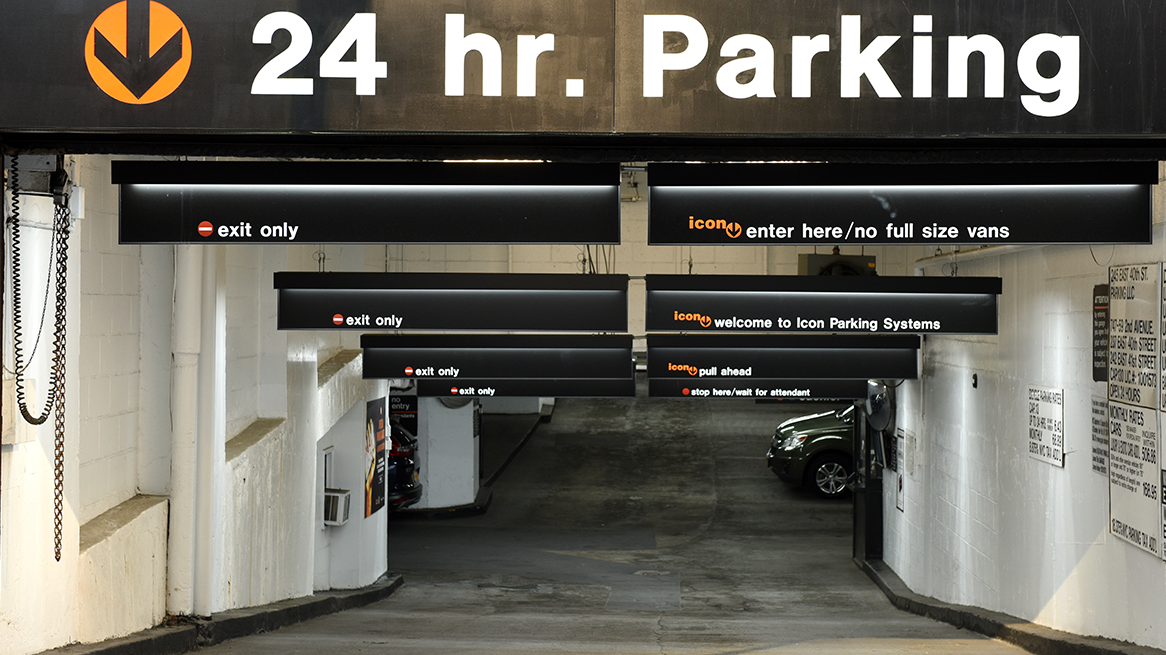
New York City's Deadly Parking Garage Problem
ON APRIL 18, 2023, a parking garage collapsed in New York City.
Dash cam footage showed concrete and debris caving in at the Ann Street Garage in Lower Manhattan. The structure eventually ‘pancaked’, damaging cars along the way, injuring several people and killing one.
In the aftermath of the deadly collapse, investigators are racing to find out what led to the catastrophe.
So far, the investigation has revealed several safety violations at the site, and has prompted a wave of immediate closures of other parking garages throughout the city.
Now, New York is scrambling to ensure this doesn’t happen again, but that’s easier said than done. The city is in the midst of a new regulatory rollout, there’s more garages than inspectors and a lot of money to be lost in temporary closures.
This is what we know so far about New York’s parking garage problem.

Above: Footage of the deadly Ann Street parking garage collapse. Image courtesy of NBC New York.
New York’s parking problem
Like many big cities, it’s safe to say New York has well … a giant parking problem. Despite access to public transit, there’s roughly 2 million cars in the city and the streets are often congested with traffic.
The struggle doesn’t end once you reach your destination. Drivers often have to circle the streets to find an open parking spot, and alternative side parking rules means residents must regularly move their cars from their highly coveted spots to accommodate street cleaning trucks on a set schedule.
Then there’s the option of parking garages, there are more than 1,000 of them across Manhattan, ranging from small sites with just seven spots, to massive garages with thousands of spaces. Some have even installed lifts to stack cars and maximise capacity.
Parking at one of these garages comes at a hefty price. Fees can to run around $45 to $50 per day, while monthly rates average a whopping $570. And that’s on top of sky-high rental prices.
New Yorkers have faced this issue for decades, and it’s not getting any better.
During the pandemic, car ownership in the city shot up 224%. Now, with working from home continuing to remain an option for many, a lot of these cars rarely move from their space, a dynamic that makes facilities like this even more important.

Above: More New Yorkers are becoming car owners following the pandemic.
The Ann Street collapse
The official cause of the Ann Street parking garage collapse has not yet been reported, but we can start to piece together what we know so far.
The collapse started when the concrete slab on the second floor fell into the first, causing the rest of the structure to “pancake” into the basement.
Structural engineer Patrick Conlon, one of the few qualified parking structure inspectors in New York City, helped explain what this could mean.
“If the second floor bearing walls or columns failed, that would bring down the second floor and anything supported by that construction,” Conlon said.
“So in that case, I'm hearing the second floor comes down and then everything comes racing down behind it. But the use of the word pancake is throwing me off a little bit here, it sounds like the building lost the integrity of its columns and or bearing rules.”
Columns and beams are essential elements when it comes to structural stability. Columns help support the weight of the building and beams help transport the force of the load.
These New York City Buildings Department reports help to give us some context around the long-standing issues at the Ann Street garage. The site had a long list of structural violations over the years, with some left open and unresolved.
Among them is ‘first floor ceiling slab cracks,’ which were first recorded in 2003.
“It's really tough to give an opinion about this because not all cracks are created equal,” Conlon said.
“You really have to look at a couple of things to understand if it's a significant crack. One is the size of the crack … and then you would look where the crack occurs. Is it at a point of high flexible stress which would indicate that it is a structural crack? And if it's a structural crack, you know, then you start to wonder, you know, is it a structural failure?”
The report also mentions ‘missing concrete covering steel beams’. That’s important because concrete provides fire safety and can prevent localised buckling by increasing stiffness in a structure.
“That indicates to me that there was probably a certain amount of spalled concrete, and spalling concrete is like a delamination,” Conlon said.
“So imagine the surface of a concrete element is falling off and usually occurs in like a thin layer. And when that flakes off, the term we use is called spalling.”
Spalling concrete, and other issues, can be caused by a number of factors including the weather. That’s particularly an issue in New York where the climate can vary quite significantly between different parts of the year. Very hot summers can give way to freezing winters.

Above: New York City typically has extremely cold and snowy winters.
“Obviously, when it's raining water causes problems,” Conlon said.
“But in the winter, [cars] track in de-icing salts, which generally have chloride dissolved in them and chloride attacks structural steel and accelerates corrosion. Once you have cracks that form, which will allow de-icing salts to now penetrate the surface more, more rapidly and at higher volumes, you could have a very rapid loss of integrity of the reinforcing steel, and you can develop an extremely severe condition that that could potentially collapse a local element or something even more.”
While the City of New York website appears to show that these issues were never officially resolved, it remains unclear if any of the structural violations contributed to the collapse.
Cars are getting heavier
Another possible factor behind this disaster could be the age of the garage combined with the weight of the vehicles inside it.
The structure housing the Ann Street garage is nearly 100-years-old, and on the day of the collapse there were 47 SUVs on the roof with 80-90 vehicles in the structure in total.
While the Ann Street site has been operating as a garage since the 1950s, cars are built differently now. According to the Environmental Protection Agency, the average new vehicle weight has increased by 6% since 1975.
It’s not yet clear if the building's original design was capable of handling that weight load, even if the actual vehicle capacity remained the same.
“There's really two issues here,” Conlon said.
“Up until recently, cars on the market were a lot lighter than they were in the 1950s, 60s and 70s. So the design loads for parking structures were reduced about 20 or so years ago, recognising that modern vehicles were much lighter than the older vehicles that the original parking generation or parking structure design modes were meant to account for.
“So what does this mean to our inventory of parking structures? We've got parking structures, all of which, if they were designed in the last 20 years, were designed for a pretty modest live load.”

Above: Cars parking in one of New York City's many parking garages.
City-wide inspections
A New York law passed in 2021 requires all parking garages to hire a qualified person for inspections every six years. The inspection cycle began in 2022, but is being phased in by neighbourhood.
“That plan should include or must include visual inspection of 100% of the parking structure,” Conlon said.
“Then there's the physical inspection of at least 10% of the structural elements. A physical inspection generally involves, in the case of a concrete structure and or sounding the services. You simply take a hammer and you're sounding along the surface. It’s a simple but effective way of identifying deteriorated concrete, deteriorated concrete will sound hollow.”
If any signs of deterioration are found, the personnel must file a report. This runs about $305, with penalty fees costing up to $5,000. When violations are found, costs could rise depending on how expensive the fix is and how long the garage might have to close.
Temporary closures mean a loss in business, and New York City parking garages can bring in a lot of money.
Say a garage charges $50 to park overnight and there’s 100 spaces available. At full capacity, the owner could be bringing in $5,000 a day. Shut the whole thing down for even a week, and that’s a loss of $35,000.
The site in and around the Ann Street parking garage has now been vacated in the interest of public safety – and it's not the only one to receive these orders.
Following the collapse, officials conducted a city wide sweep and found hundreds of violations across 200 garages, roughly 20 percent of which were related to structural conditions including corroded and spalled concrete and deteriorated steel.
The findings have prompted a growing number of temporary closures across New York. That's an ongoing challenge for America's biggest city which has less than 70 parking garage inspectors as of June 2023.
“Finding qualified people is a problem in this day and age for virtually any job, let alone one as specialised and wide ranging as structural inspections,” Conlon said.

The latest inspection program has only been around for a few years, and won’t be rolled out across the entire city until 2027. The part of Manhattan where the Ann Street garage was located wasn’t due for inspection until late 2023.
While stronger enforcement of these laws might be a monetary burden to the garage owners with violations, it is a necessary step to ensure public safety.
“It will lead to better maintenance of New York City's inventory of parking structures, just like the facade law that was passed 40 years ago led to better maintenance of building facades,” Conlon said.
“Although this process will certainly be painful for some owners who will be probably surprised by the extent of conditions and the cost of their repairs that they have to deal with, I think it's a necessary step in the maintenance of an inventory of generally relatively old buildings.”







